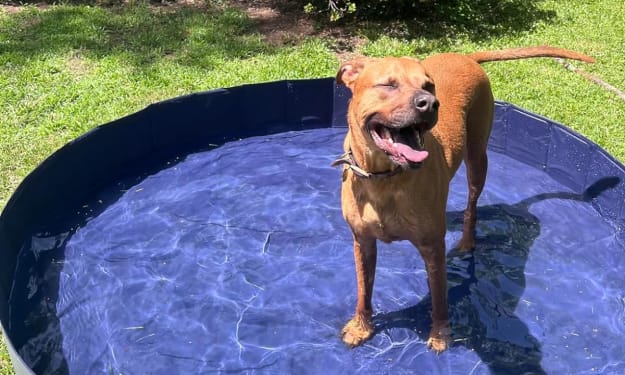Heating Options for Pet Frogs
Keeping Your Amphibian Friends Comfortable and Thriving

Maintaining the proper temperature is crucial for the health and well-being of pet frogs. Frogs are ectothermic, meaning they rely on external sources to regulate their body temperature. Providing the right heating options is essential to ensure your frog's comfort and support its natural behaviors. In this comprehensive guide, we'll explore various heating solutions to help you create the ideal environment for your pet frog.
Establishing the Ideal Temperature Range
The optimal temperature range for most pet frogs falls between 70°F and 85°F (21°C and 29°C). This temperature range mimics the natural habitat of many frog species and allows them to thermoregulate effectively. It's important to note that the specific temperature requirements may vary depending on the frog species, so it's essential to research the needs of your particular pet.
Choosing the Right Heating Source
When it comes to heating options for pet frogs, there are several effective solutions to consider. The most common heating sources include:
Basking Lamps
Basking lamps, also known as heat lamps, are a popular choice for heating pet frog enclosures. These lamps provide a localized warm spot, allowing your frog to move in and out of the heated area as needed. Basking lamps come in a variety of wattages and can be positioned to create a temperature gradient within the enclosure, giving your frog the ability to thermoregulate.
Undertank Heaters
Undertank heaters, or substrate heaters, are placed beneath the substrate in your frog's enclosure. These heaters warm the entire tank, creating a more even temperature distribution. Undertank heaters are particularly useful for larger enclosures or for maintaining a consistent temperature throughout the habitat.
Ceramic Heat Emitters
Ceramic heat emitters are a specialized type of heating device that produce infrared heat without the visible light associated with traditional bulbs. These emitters are ideal for nocturnal or light-sensitive frog species, as they can provide warmth without disrupting the frog's natural light cycle.
Radiant Heat Panels
Radiant heat panels are flat, wall-mounted heating devices that emit infrared radiation to warm the enclosure. These panels are energy-efficient and can be used to heat larger habitats, making them a suitable option for housing multiple frogs or larger species.
Monitoring and Regulating Temperature
Regardless of the heating source you choose, it's crucial to monitor the temperature within your frog's enclosure to ensure it remains within the optimal range. Invest in a reliable digital thermometer or thermostat to track the temperature and make adjustments as needed. Some heating devices come with built-in thermostats, which can help maintain the desired temperature automatically.
Creating a Temperature Gradient
To allow your frog to thermoregulate effectively, it's essential to create a temperature gradient within the enclosure. This means having a warmer area, known as the "basking zone," and a cooler area, known as the "cool zone." Your frog can then move between these zones to regulate its body temperature as needed.
Incorporating Hiding Spots and Enrichment
In addition to providing the right heating options, it's important to create a well-rounded habitat that caters to your frog's natural behaviors and needs. Incorporate hiding spots, such as rocks, logs, or plants, to give your frog a sense of security and the ability to retreat from the heat when necessary. Additionally, consider adding enrichment elements, like climbing structures or water features, to encourage natural behaviors and stimulate your frog's curiosity.
Monitoring Your Frog's Behavior
Observing your frog's behavior can provide valuable insights into its comfort and well-being. If your frog appears lethargic, is not eating, or is exhibiting other signs of distress, it may be an indication that the temperature in the enclosure is not optimal. Adjust the heating sources and monitor the changes to ensure your frog is thriving.
Maintaining Proper Humidity Levels
While temperature is a crucial factor, maintaining the appropriate humidity levels is also essential for the health and comfort of your pet frog. Frogs require a specific range of humidity, typically between 60% and 80%, to support their respiratory and skin functions. Incorporate appropriate humidity-regulating devices, such as misting systems or substrate moisture control, to create the ideal environment for your frog.
Conclusion
Providing the right heating options for your pet frog is a crucial aspect of their care. By understanding the optimal temperature range, selecting the appropriate heating sources, and creating a well-balanced habitat, you can ensure your frog's comfort and support its natural behaviors. Remember to monitor the temperature and humidity levels regularly, and make adjustments as needed to keep your amphibian friend thriving. For more information on caring for pet frogs, visit https://innovateanalysis.com/.
About the Creator
Hasan
Welcome...
In this site of mine you can learn amazing things and many information that you don't know so please subscribe to my site.
Enjoyed the story? Support the Creator.
Subscribe for free to receive all their stories in your feed. You could also pledge your support or give them a one-off tip, letting them know you appreciate their work.






Comments
There are no comments for this story
Be the first to respond and start the conversation.